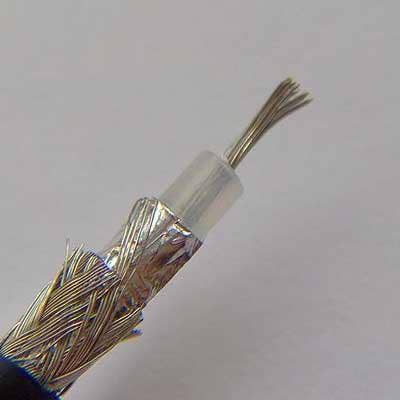5 Reasons Why Conference Connectivity Is Painfully Slow

The Unbearable Lightness Of Conference Connectivity
Anyone who has been to a conference has experienced the frustration of slow or nonexistent Internet connections. Apple and Google were both unable to present demos at recent conferences due to bandwidth bottlenecks. In light of the rapid advancement of networking technology, it's hard to figure out why this is still an issue.
CRN spoke with networking experts to figure out what's going on, and here we offer five explanations for why getting online at a conference is basically a crap shoot.

T1 Is A Dinosaur
T1 used to be the norm for conference halls, but nowadays you can get more connectivity from a cable modem. These days it's all about 10-megabit Ethernet, but many convention centers are still running T1 connections.
At an event with several thousand people, a T1 just isn't going to work. "That bandwidth gets eaten up pretty quickly. For a trade show, you need a T3 at a minimum," says Joe Bardwell, president and chief scientist of Connect802, a wireless solution provider in San Ramon, Calif.
But even T3 might not be able to meet the needs of large conferences. "If you have less than 512 kilobits as an individual user, you're complaining that it's slow. If you have 1 megabit per second, that’s only 45 users on a T3," Bardwell said.
Vince Bradley, CEO of Malibu, Calif.-based master agent World Telecom Group, says legacy TDM networks are complicating the issue in some convention centers. "What they should have is an Ethernet connection, either 10 megabit or 100 megabit. That's a straight IP connection," Bradley said.

Too Much 802.11g
Most wireless networks at conference centers are based on 802.11g, which pales in comparison to the throughput offered by its beefier, younger cousin 802.11n.
The big problem with 802.11g is that it only has three channels: 1, 6 and 11. That’s just not going to cut it in even a medium-size conference hall with 1,000 people, says Bardwell. "In that room, even if you have enough access points for the capacity of users, you still only have three channels with 802.11g," he said.
802.11n offers many more channels, each with a significantly higher aggregate capacity. "There is an awareness that 802.11n solves the capacity problems that limit 802.11g," said Bardwell. "IT departments are well aware that they need to migrate to 802.11n for wireless, and those companies that can afford it are doing so."

Politics and Money
Think connectivity issues are purely technological in nature? Think again. Good old politics and business plays a bigger role than you might think.
The architecture of a convention center determines, to a large extent, how well wireless connectivity flows inside of the building. This accounts for the connectivity issues that have plagued some older facilities, but newer facilities are actually constructing their buildings in order to exert more control over wireless communications.
"New convention centers are built to try to block wireless communications because their owners want to make money," said World Telecom Group's Bradley. "This blocking isn't achieved through firewalls and network services, but actual brick-and-mortar."
"Another issue is that large venues often sign connectivity agreements that make it difficult for third parties to bring in additional services," said Gary Berzack, CTO and COO of eTribeca LLC, a New York City-based wireless solution provider.

An Army Of Smart Devices
Apple CEO Steve Jobs had to repeatedly ask Worldwide Developer Conference attendees to turn off Wi-Fi and Bluetooth so that he could proceed with an iPhone demo. In May, at Google's I/O event, the Google TV demo was delayed for several long, uncomfortable minutes as Google staffers made similar pleas to an audience chock full of mobile device users.
The problem with today's smartphones is that they're too powerful, and too smart, to not gobble up bandwidth in densely populated environments. "A lot of these newer devices are affecting connectivity -- mobile technology is going so fast right now," said Bradley of World Telecom Group. "And with 4G being rolled out, the problem is only going to get worse."

Highly Mobile Attendees
Conference halls are typically massive venues, and attendees often find themselves following the herd in a march to the next far-flung session or keynote. So even if a convention center has saturated a specific area with wireless connectivity, this sort of unpredictable human randomness can throw a monkey wrench into the best laid networking plans.
"When a conference is on, you could have 1,500 people in one place at one moment, and then they'll all move to a completely different place ten minutes later," said eTribeca's Berzack. "Systems are not designed to understand this, and manual override is needed often to help them. And the budget for this type of work is rarely allocated."